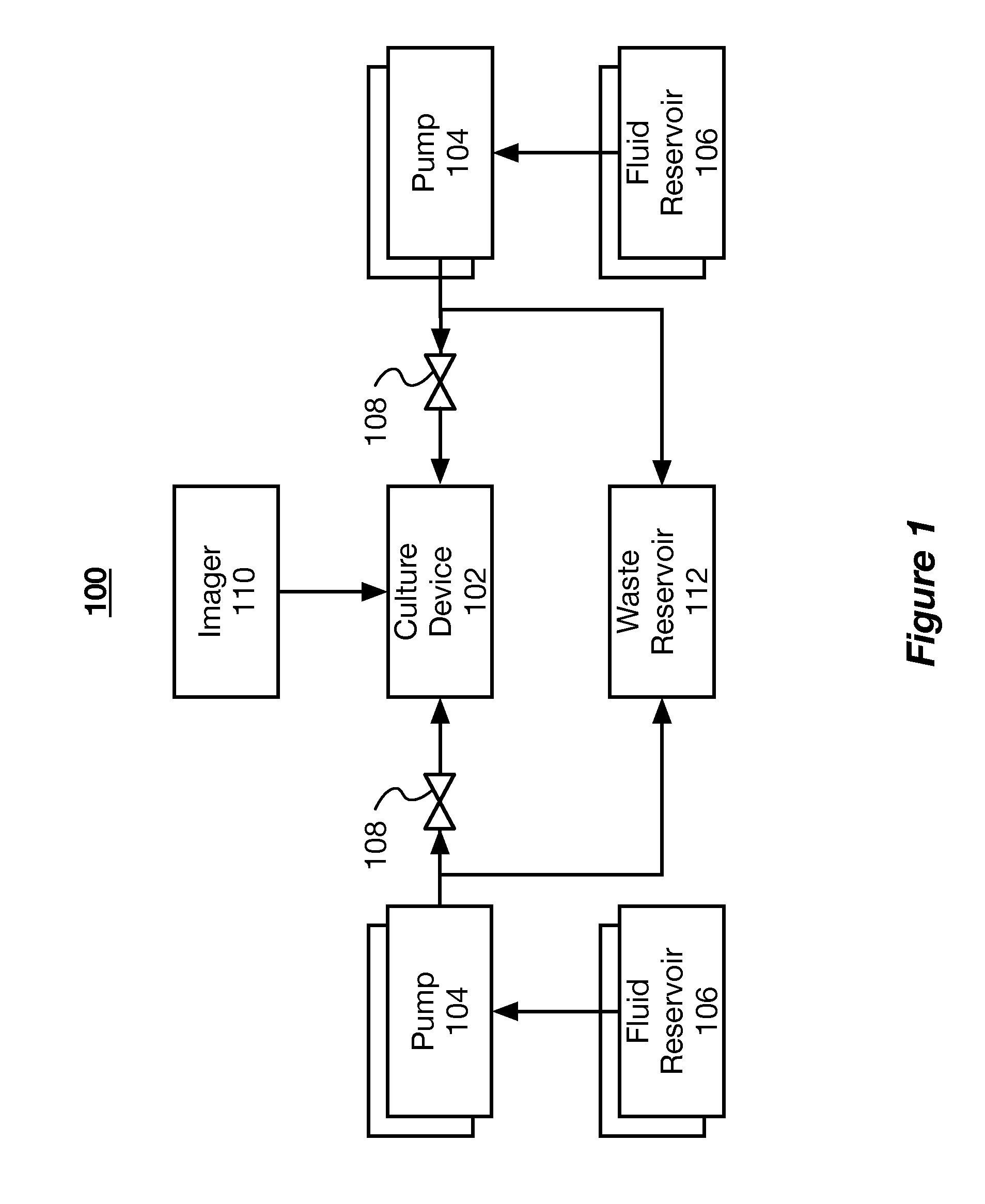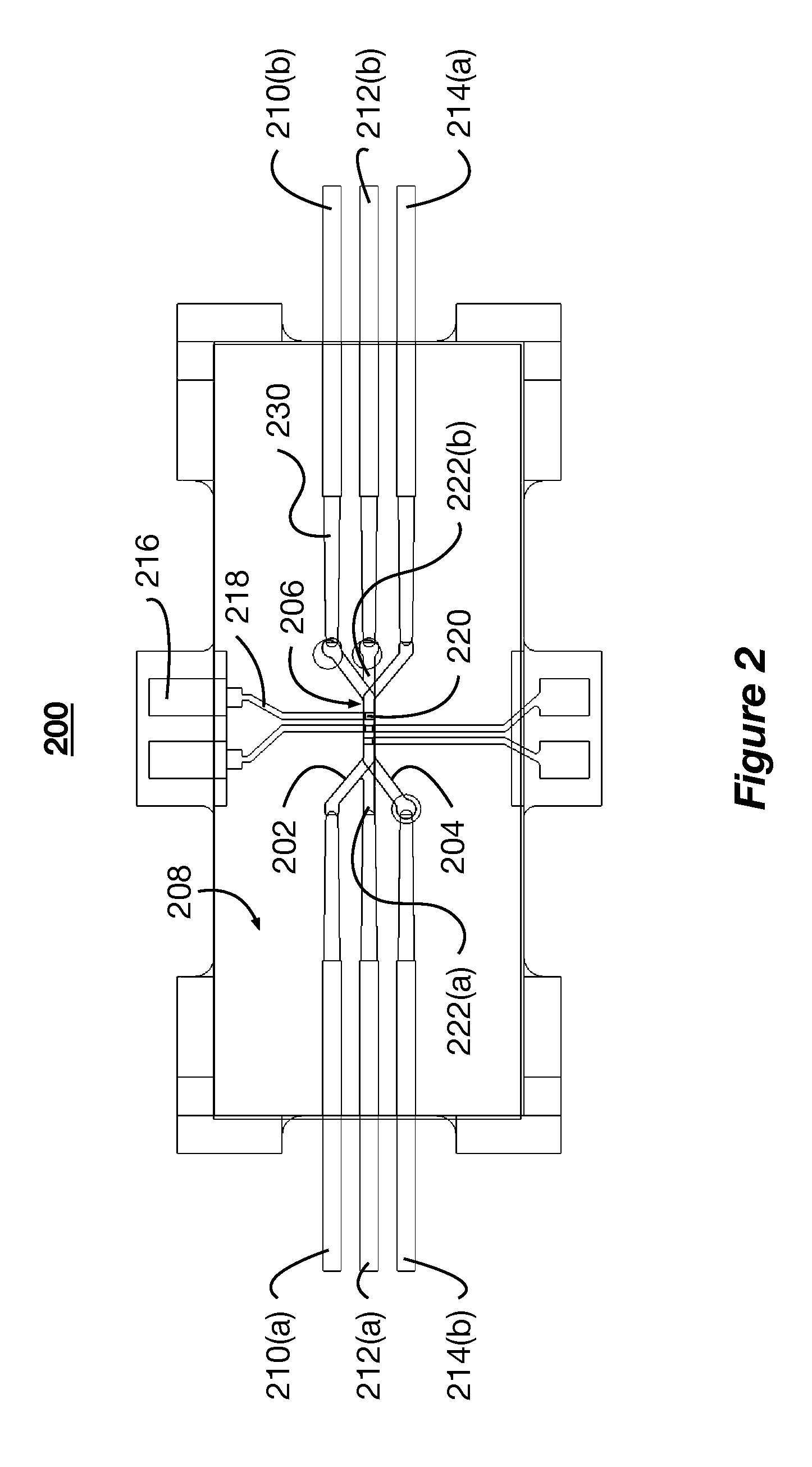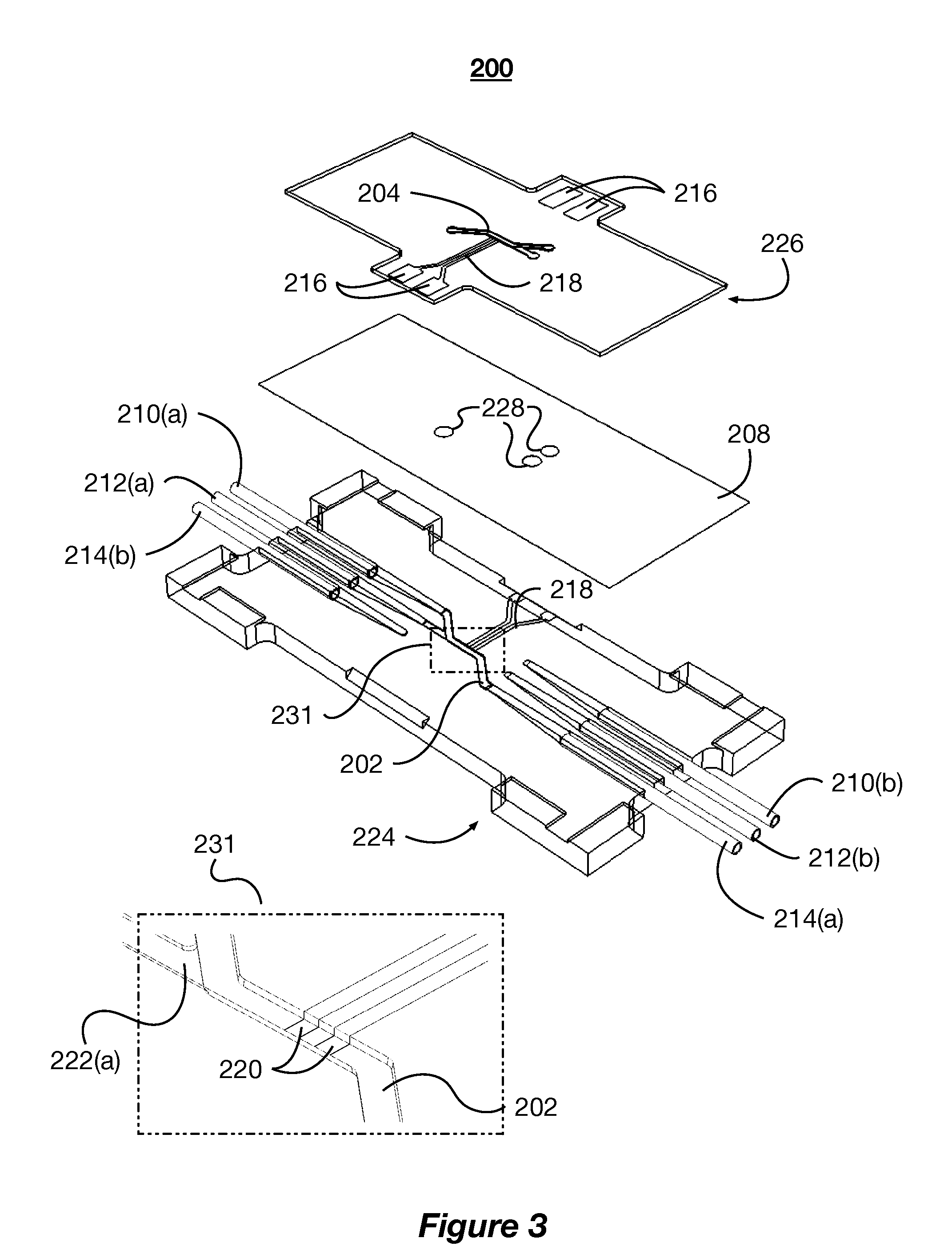Microfluidic tissue model
a microfluidic tissue and microfluidic technology, applied in the field of microfluidic tissue models, can solve the problems of manual placement of sensors affecting readings, artifacts in recordings,
- Summary
- Abstract
- Description
- Claims
- Application Information
AI Technical Summary
Benefits of technology
Problems solved by technology
Method used
Image
Examples
Embodiment Construction
[0021]The various concepts introduced above and discussed in greater detail below may be implemented in any of numerous ways, as the described concepts are not limited to any particular manner of implementation. Examples of specific implementations and applications are provided primarily for illustrative purposes.
[0022]The present disclosure describes systems and methods for mimicking body tissue and the function thereof. The mimicked body tissue can include kidney tissue, the blood brain barrier, lung tissue, gastro-intestinal tissue, skin tissue, and other tissues. In some implementations, the systems described herein are used to test the impact of controlled factors on the tissue. The controlled factors can include flow rates, shear rates, topographical patterns, and test chemicals (e.g., therapeutics and toxins). In some implementations, the system and methods are used to test pharmaceutical and biological therapies, characterize healthy or diseased tissue, and observe phenomena...
PUM
 Login to View More
Login to View More Abstract
Description
Claims
Application Information
 Login to View More
Login to View More - R&D
- Intellectual Property
- Life Sciences
- Materials
- Tech Scout
- Unparalleled Data Quality
- Higher Quality Content
- 60% Fewer Hallucinations
Browse by: Latest US Patents, China's latest patents, Technical Efficacy Thesaurus, Application Domain, Technology Topic, Popular Technical Reports.
© 2025 PatSnap. All rights reserved.Legal|Privacy policy|Modern Slavery Act Transparency Statement|Sitemap|About US| Contact US: help@patsnap.com



